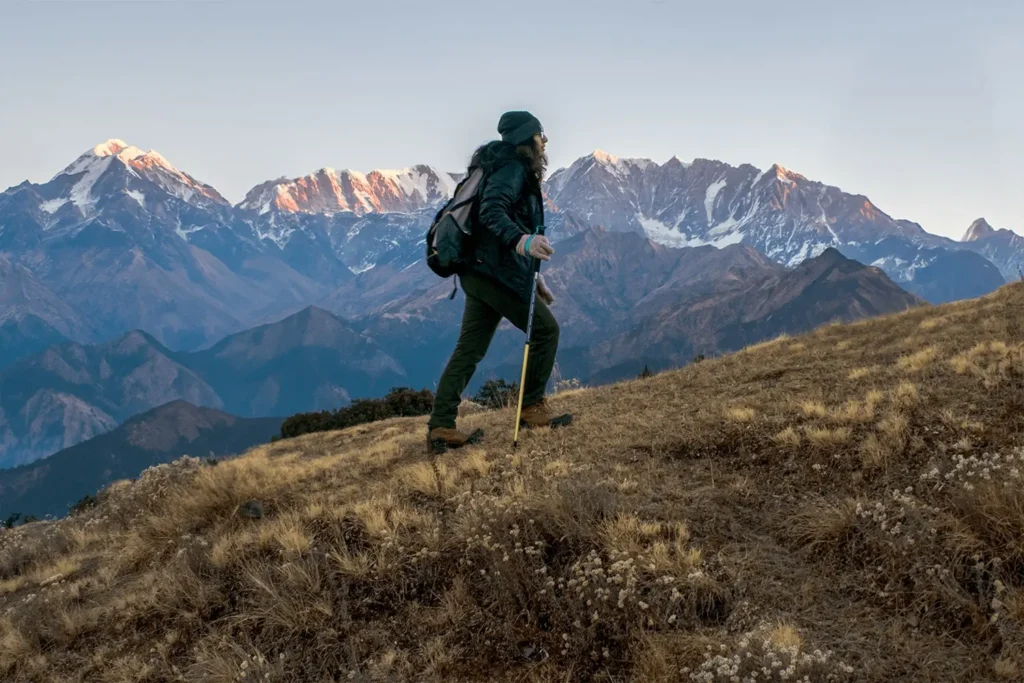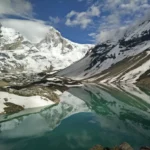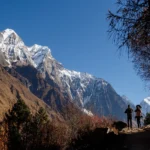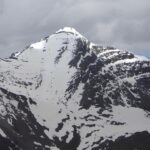Trekking in the Himalayas offers unparalleled access to awe-inspiring landscapes, but without proper physical preparation, navigating the high-altitude treks can become exhausting. Getting fit for a Himalayan trek is crucial to enjoying the tranquil bliss of the breathtaking landscapes without any hindrance.
A Himalayan trek is an amalgamation of traversing rugged terrain in addition to harsh and unpredictable weather conditions. To tackle such challenges, trekkers must be physically fit before embarking on any high-altitude trek.
Here is a comprehensive guide tailored to assist you in getting fit for a Himalayan trek.
If you have found yourself on this page, you have either signed up for a Himalayan trek or are planning to explore. If you have already signed up, it is recommended that you start preparing physically as soon as possible. If you are still exploring your options, read on for more information. We have compiled a detailed guide on getting fit for a Himalayan trek.
How to start your preparation for a Himalayan trek?
There is an abundant activity to engage in when working on getting fit for a Himalayan trek. As you will be traversing the high altitude region on challenging terrain, there are two aspects of fitness to emphasise, viz. strengthening your cardiovascular endurance and building your body strength.
1. Cardiovascular Endurance
Improving your cardiovascular endurance is crucial for traversing challenging hikes in the Himalayan terrain. Himalayan treks take you to an altitude above 10,000ft. The oxygen level drops as altitude gain is quick in high-altitude Himalayan treks. Traversing the high altitude regions can become risky if you are not physically fit. But if you work on cardiovascular endurance, it helps you to tackle the altitude gain and deal with low oxygen levels.

Here are some strategies to enhance cardiovascular fitness specifically for hiking:
- Engage in aerobic activities such as walking, jogging, running, cycling, or swimming. Aim for at least 40 to 50 minutes of moderate-intensity cardio exercises most days.
- Incorporate interval training into your routine by alternating between high-intensity bursts and low-intensity recovery periods. This mimics the varying intensities encountered during any high-altitude trek.
- Include stair climbing into your workouts to simulate the steep ascents of a hike. This strengthens your legs and improves cardiovascular endurance.
- Go on short hikes before embarking on strenuous high-altitude treks.
2. Strength Building
Aerobic exercises will help you through ‘walking’ on the trek. However, strength training will get you through the trek’s elevations, inclinations, and slopes.
The time and effort invested in building core strength enable you to traverse the uneven terrain in the mountains. Every Himalayan trek comprises steep inclines, rugged terrain, and technical patches. Strengthening your upper and lower body equips you to navigate the tricky ascents comfortably.
Divide your strength-building training into two categories- Upper and Lower body
- Upper Body Exercises
Upper body exercises strengthen your core. Strengthened core muscles allow you the required balance and stability. Working on your shoulder muscles and back assists you in carrying your trekking bag comfortably.
Here is a list of upper body exercises you can incorporate into your workout routine
- Pushups – 10*3
- Planks – 1 minute
- Pullups – 10*3
- Burpees – 10*3
- Lower Body Exercises
Working on your lower body strengthens your thigh and leg muscles. Trekking is an activity that requires you to walk long distances continuously. Strengthening your knees and legs assists you in climbing the distance comfortably. Strong knee and thigh muscles allow you to navigate tricky patches conveniently.
Here is a list of Lower Body Exercises you can focus on
- Squats – 10*3
- Glute bridges -10*3
- Calf Raises – 10*3
- Burpees – 10*3
3. Flexibility and Balance
After figuring out your workout routine, you must emphasize flexibility. In the outdoors, you will tackle sections where body flexibility and balance are required, for example – crossing a river, walking on a boulder section, or simply sliding through the snow.
Stretching exercises such as yoga condition your body to acquire flexibility and balance. Additionally, yoga exercises help you in recovery. For Balance, strengthen your core with core-specific exercises. A 15-minute core exercise can go a long way in edging your exercise routine.
The body also needs a ton of recovery. Recovery can be productive as well as relaxing. After all your workout routine should also be fun. Certain Exercises that can aid recreation and recovery are –
- Swimming
- Walking/Jogging
- And movement Sports like badminton, volleyball, cricket, etc.
How much time should you dedicate?
Does your trek involve long hours of hiking and short camping time or short hikes accompanied by long hours of camping?
For the former, you must build good cardiovascular endurance(meaning your heart and lungs should be able to take up a great deal of exercise). Plan workouts of around 60 minutes five days a week to achieve this. For later, plan workouts of about 30 to 45 minutes, followed by brisk walking or recreational activities will suffice.
When to start preparing?
The duration of your physical fitness depends on the difficulty level of your trek. If you are embarking on difficult grade treks like Bali Pass and Parang La, your preparation must kick off a minimum of 3 months before the trek. For moderate treks like Tarsar Marsar and Sandakphu, begin your preparation two months before. However, if you are short on time, intensify your workout to meet the fitness target.
Workout intensity for Himalayan Treks
Himalayan treks are categorized as easy or beginner-friendly, moderate, and difficult treks. The classification depends on the altitude and distance of the trail. Trekkers need to prioritize their fitness preparation and the intensity of the workout based on the treks they have opted for.
Intensity in exercise is how hard your body is working during a physical activity. So, the higher the intensity, the harder your heart, lungs, and muscles work to keep up with the intensity of exercise.
While getting started, begin with low intensity – a workout where you can probably speak while working (this is your ‘actual’ pace). If you can run 3 km comfortably without running out of breath, it is your actual pace. Let’s call it a workout of an easy intensity.
After you get comfortable with your “actual” pace, gradually increase the intensity from “easy” to “moderate”. At this stage, increase the distance from 3 km to 4 km and practice for a few days to gauge your comfort with the pace. Continue this for a week and then progress to the “difficult” level, where you should aim to cover a distance of 5 km. Once you can complete 5 km at your pace comfortably, increase the intensity by reducing the duration to cover the distance.
If you’re planning an easy trek, working out with low intensity should be sufficient as it will help your body adapt to the trek. However, for moderate to difficult treks, engage in high-intensity workouts. Make sure you feel a considerable amount of exertion after your run or gym workout to build up your stamina for the trek.
Here is a quick sample workout you need to prepare for a Himalayan trek:
Sample workout for easy to beginner-friendly treks
We recommend easy treks for beginners. A moderate fitness level helps you to complete these treks comfortably. On easy treks like Dayara Bugyal and Kedarkantha, you will walk on a comfortable trail for 3 to 4 days. The maximum altitude gain is 12,000ft.
Note – The time duration of each workout is 30 minutes with easy intensity. Along with strength-building exercises, improve your cardiovascular endurance and time to complete 5 km under 40 minutes.
Day 1 | 10 minutes Lower Body Strength Training Exercises + 15 minutes Aerobic Exercises + 5 mins Core Exercises |
| Day 2 | Rest Day |
Day 3 | Recreational Exercises (Swimming, Cycling, Walking etc.) |
| Day 4 | Rest Day |
Day 5 | 10 minutes Lower Body Strength Training Exercises + 15 minutes Aerobic Exercises + 5 mins Core Exercises |
| Day 6 | Rest Day |
| Day 7 | Yoga and Stretching |
Note – Every workout should be planned keeping in mind an additional 5 minutes of warmup and 5 minutes of cooldown.
Sample workout for moderate treks
Getting fit for a Himalayan trek of moderate categories like Buran Ghati and Kashmir Great Lakes treks demands better strength and stamina. On these treks, you navigate challenging terrain for 6 to 8 days. These treks will take you to altitudes ranging from 13,000ft to 15,000ft.
Note – The time duration of each workout is 45 minutes with medium intensity. Along with strength-building exercises, improve your cardiovascular endurance and time to complete 5 km in 35 minutes.
Day 1 | 15 minutes Lower Body Strength Training Exercises + 20 minutes Aerobic Exercises + 10 mins Core Exercises |
| Day 2 | Recreational Exercises (Swimming, Cycling, Walking etc.) |
Day 3 | Rest Day |
| Day 4 | 15 minutes Lower Body Strength Training Exercises + 20 minutes Aerobic Exercises + 10 mins Core Exercises |
Day 5 | Yoga and Stretching |
| Day 6 | 15 minutes Upper Body Strength Training Exercises + 20 minutes Aerobic Exercises + 10 mins Core Exercises |
| Day 7 | Rest Day |
Sample workout for difficult treks
For difficult treks like Pin Bhaba Pass and Bali Pass, you will traverse challenging terrains for 7 to 8 days. The difficult treks take you to an altitude above 15,000 ft.
Note – The time duration of each workout is 60 minutes with high intensity. Along with strength-building exercises, improve cardiovascular endurance and time to complete 5 km in 35 to 32 minutes.
Day 1 | 20 minutes Lower Body Strength Training Exercises + 25 minutes Aerobic Exercises + 15 mins Core Exercises |
Day 2 | 20 minutes Full (Upper+Lower) Body Strength Training Exercises + 25 minutes Aerobic Exercises + 15 mins Core Exercises |
| Day 3 | Yoga and Stretching |
| Day 4 | 20 minutes Full (Upper+Lower) Body Strength Training Exercises + 25 minutes Aerobic Exercises + 15 mins Core Exercises |
Day 5 | 20 minutes Upper Body Strength Training Exercises + 25 minutes Aerobic Exercises + 15 mins Core Exercises |
| Day 6 | Recreational Exercises |
| Day 7 | Rest Day |
Other Important Factors to Consider Before Your Trek
Apart from following a physical fitness routine, there are a few crucial factors to consider while preparing for a Himalayan trek. Incorporate these practices into your daily routine to make your high-altitude trekking experience comfortable and enjoyable. It’s essential to be aware of the things to avoid before and during the trek, which many of us may not know.
1. Leave no trace
Leave No Trace implies leaving the mountains the way we discovered. Avoid littering while on the trek and to ensure that you have left no trace of your presence bring the waste generated on the trek back to the city for systematic disposal.
2. Follow a steady pace
Trekkers tend to increase their pace in excitement during the initial climb. The mantra on a trek is to go slow and far. Go slow to sustain a steady pace to save energy and climb the trail while glancing at breath-taking views around you.
3. Healthy and Nutritious Diet
On a trek, you will walk continuously for hours. To navigate the trail without any hindrance from the body. Consuming junk and unhealthy foods before the trek can upset your stomach, obstructing you from hiking uninterruptedly. Follow a healthy and nutritious diet to maintain good gut health.
4. Restrain Alcohol Consumption
Restrain alcohol consumption before the trek. Our weekend lifestyle causes more damage to our bodies than it rejuvenates us. Alcohol consumption is a big no-no before the trek and also on the trek.
Remember we are in the outdoors to embrace nature and experience it in its raw form to the fullest. You can always come back to the city after the trek and treat yourself to a drink or two.
While many explorers fancy drinking on a trek, it is strictly prohibited to drink when your body and mind are out of your comfort zone. Yes, it can give you a quick high, but harms your routine.
5. Avoid Smoking
Smoking hampers your cardiovascular endurance. It causes breathlessness and slows you down while traversing a high-altitude trek. It will not only hinder your pace but also the entire group. If you are a smoker signed up for a trek, quit smoking the trek.





